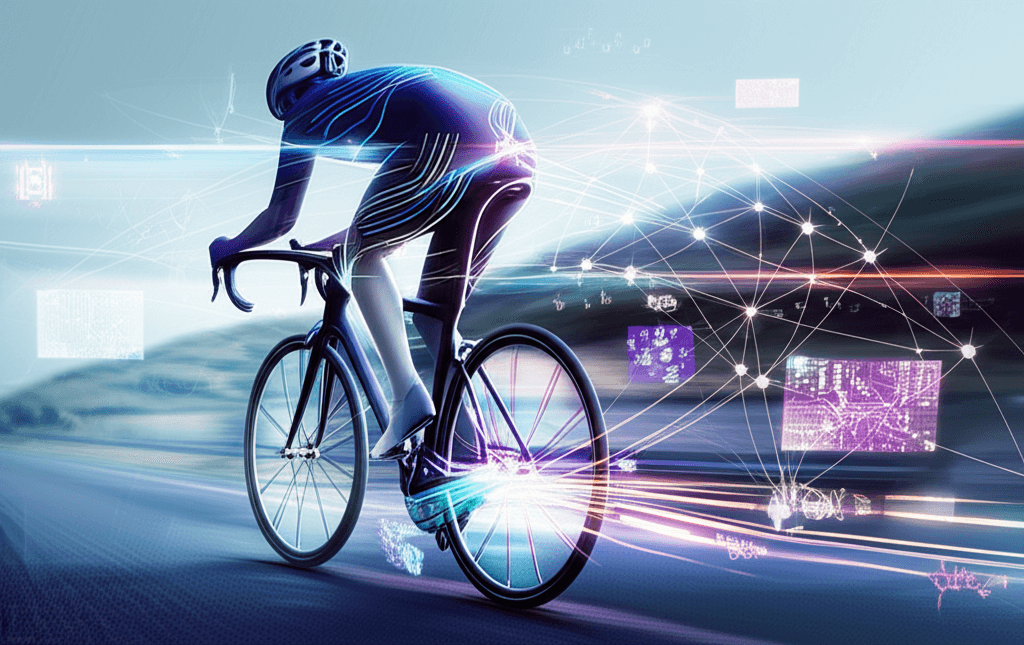Tour de France Embraces AI, Revolutionizing Performance and Fan Experience
Beyond the pedal, AI and a comprehensive digital twin are redefining race strategy, rider performance, and fan connection.
July 3, 2025

The Tour de France, a pinnacle of human endurance, is undergoing a profound digital transformation, leveraging an array of technologies including artificial intelligence, sophisticated sensors, and immersive platforms to redefine the experience for riders, teams, and a global fanbase. This technological surge is not merely about enhancing viewing figures but is fundamentally altering race strategy, athletic performance, and how audiences connect with the grueling three-week event. Central to this evolution is the concept of a massive, mobile connected stadium, a digital ecosystem that processes millions of data points to deliver unprecedented insights and engagement. A key development in this landscape is a new five-year partnership with technology firm Capgemini, which will succeed NTT as the official technology partner for the Tour and 13 other A.S.O. cycling events.[1][2] This collaboration aims to accelerate the digital ambitions of the race, focusing on using AI and technological innovation to enrich the fan experience and provide deeper performance insights.[1][2]
At the heart of the technological revolution is the continued development of a digital twin of the race. This virtual replica of the entire event, first pioneered by former partner NTT, creates a dynamic, data-rich environment that benefits everyone from race organizers to roadside fans.[3][4] Tiny sensors placed under the saddle of each rider's bike constantly transmit a stream of data, including geolocation, speed, and other metrics, over radio and microwave networks.[3][5][6] This information is then processed by edge computing devices and combined with other data sources, such as weather conditions and vehicle locations, to create a comprehensive, real-time digital model of the race.[7] This allows for more efficient race management and provides the raw data that fuels broadcast graphics, social media updates, and the official mobile application.[8][7] For fans, this translates into a richer understanding of the race dynamics, offering insights that were previously impossible to glean from a simple television broadcast.[9]
For the athletes and their teams, the integration of technology, particularly AI, is becoming a critical component of performance and strategy.[10] Teams are increasingly employing data scientists and performance engineers to analyze the vast amounts of information generated by power meters, heart rate monitors, body temperature sensors, and lactate trackers.[10][11] AI platforms are being developed to sift through this data, identifying patterns and variables that might have been overlooked by human analysis.[10] These AI-driven insights can inform everything from personalized training and recovery protocols to race-day strategy, such as equipment selection and pacing.[12][11] Some teams are even developing their own proprietary AI data platforms, which they credit with giving them a competitive edge by providing highly specific insights tailored to their riders.[10][11] The goal is to uncover the marginal gains that can make the difference in a sport where victory can be decided by seconds.[10] This data-centric approach extends to anti-doping efforts as well, with the International Testing Agency utilizing strengthened data analysis to refine its testing strategies and Athlete Biological Passport (ABP) program.[13]
The fan experience is being reimagined through a multi-faceted digital strategy designed to engage a broader and younger audience.[8] Broadcasters are introducing innovative features like a 'quad screen' option that combines feeds from helicopters and motorbikes to offer a more complete view of the race.[8][14] The official mobile app, fantasy sports leagues, and video games provide interactive ways for fans to immerse themselves in the competition.[8][15] The official Tour de France video game, for instance, has been enhanced with a new graphics engine for a more realistic experience.[16] Furthermore, partnerships with platforms like Kahoot! offer daily quizzes and interactive learning content, making the event more accessible and educational for fans of all ages.[15][17] Social media engagement is also a key focus, with platforms like TikTok being used to reach new demographics through user-generated content and behind-the-scenes glimpses.[8] These digital initiatives aim to transform the Tour from a passive viewing experience into an interactive, year-round engagement.
In conclusion, the Tour de France is no longer just a test of physical strength and endurance; it is a showcase for the power of digital technology and artificial intelligence. The creation of a comprehensive digital twin, fed by real-time data from a network of sensors, is providing organizers with powerful management tools and fans with deeper insights into the race.[3][7] Concurrently, AI is revolutionizing how teams approach rider performance, offering the potential to unlock new levels of efficiency and strategy through sophisticated data analysis.[10][11] For the global audience, a suite of digital platforms and interactive content is fostering a more engaging and immersive experience than ever before.[15][17] As these technologies continue to evolve, they promise to further blur the lines between the physical and virtual, ensuring that the world's most prestigious cycling race remains at the forefront of sporting innovation.
Sources
[2]
[5]
[6]
[9]
[11]
[12]
[13]
[15]
[17]